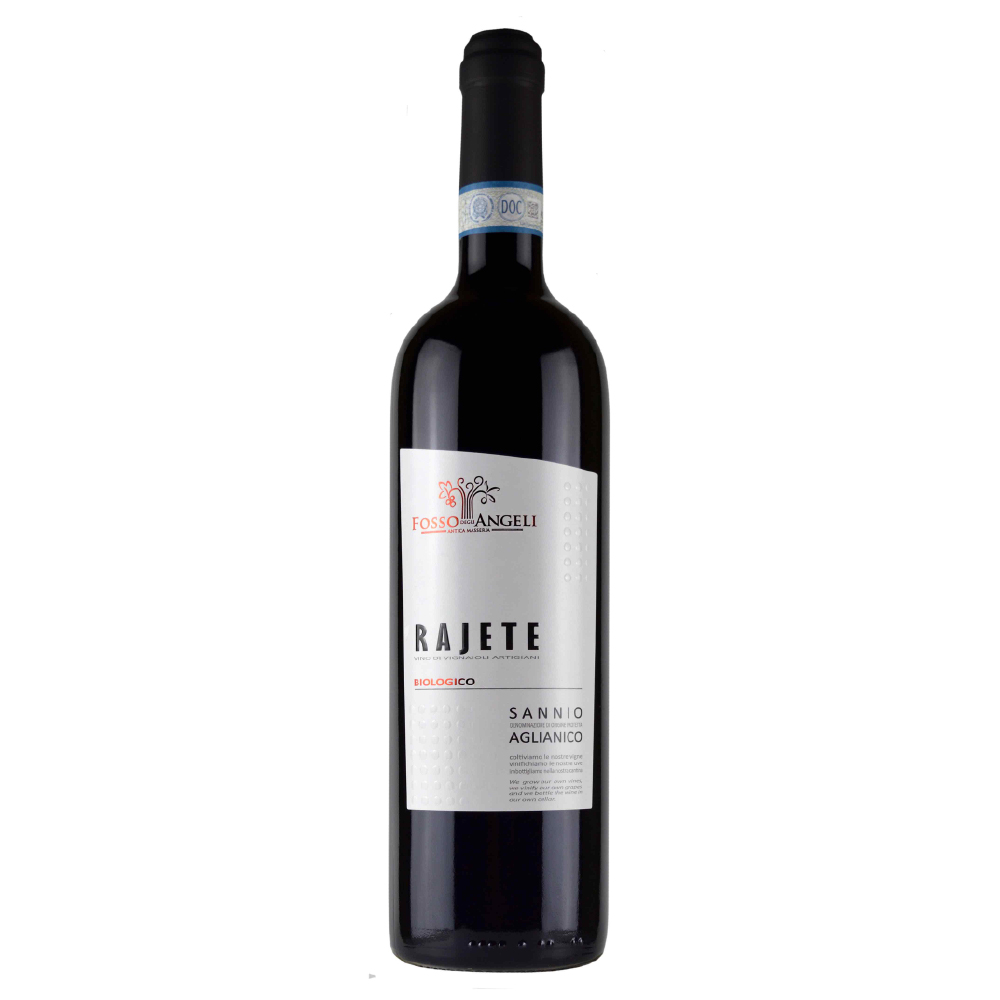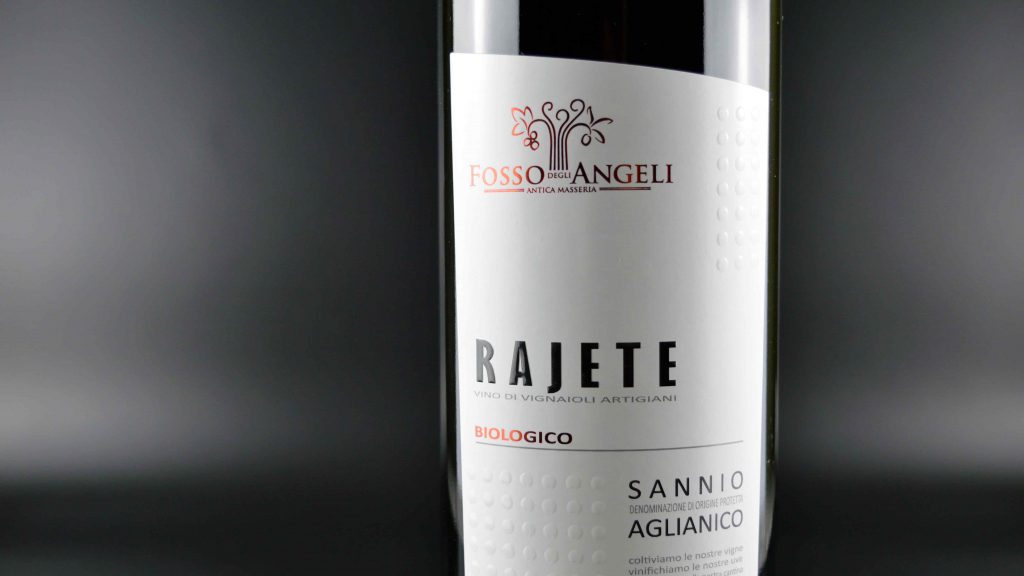HE SEEMS TOUGH BUT...
after all it's a treasure 😄


RAJETE
Denomination: Sannio Aglianico DOC
Certification: organic wine conversion
Area: Casalduni – Guardia Sanframondi
Grapes: Aglianico 100%
Soil: clayey soil and sandy tufaceous
Altitude: 400 mt. s.l.m. average of the vineyards
Exposure: south / south-west
Training system: Guyot 3500 vines/hectare
Production: 60 ql./ha
Harvest period: end of October
Harvest: manual, in boxes
Vinification: slow maceration of the lightly crushed grapes for about 30 days, racking and pressing of the marc. Ageing 80% steel 20% barrique for about 12 months, ageing in the bottle for about 12 months
Description: It has a very intense purple red color, the nose reveals a broad and concentrated fruity texture, in which black cherries and ripe plums alternate. On the palate it offers a tannic structure of good finesse and a decisive freshness. Balsamic notes accompany a pulpy fruit enriched with veins of licorice and spices

pairings
Aglianico is perfect to accompany grilled and roast meats, but also to be combined with game such as duck, pheasant, roe deer and wild boar.
It is also perfect to be combined with platters of cured meats and cheeses such as the famous aged caciocavallo and then grilled and served with bread. A local recipe, highly recommended for those who have never tried it, is the abbuoito, a sort of grilled sausage, made with a mix of lamb entrails, with the Aglianico RAJETE goes hand in hand.

HISTORICAL NOTES
It is an ancient vine, probably originating from Greece and introduced into Italy around the 7th-6th century BC. One of the many testimonies of its long history is the discovery of the remains of a Roman press in the area of Rionero in Vulture, in the province of Potenza. There is no certainty about the origins of the name, which could date back to the ancient city of Elea (Eleanico), on the Tyrrhenian coast of Campania, or be more simply a corruption of the word Ellenico. Historical and literary testimonies of the presence of this vine can be found in Horace, who sang of the qualities of his native land Venosa and its excellent wine. According to others, the original name does not derive from Elleanico or Ellenico which then became Aglianico during the Aragonese domination during the 15th century, due to the double l pronounced gli in Spanish phonetic use but from the suffix “anicus” which in Latin indicates belonging to something and from the term “llano” which in Spanish means plain, so Aglianico is nothing other than the wine of the plain, in Roman times a low-quality wine and therefore defined as Latin.
Aglianico is the most widespread black grape variety in the Sannio Beneventano. It perfectly identifies the Samnite viticulture, having been cultivated for centuries in the areas with the greatest vocation of the province, where it has adapted perfectly to the different hilly environments.
Share this:
- Click to share on Facebook (Opens in new window)
- Click to share on WhatsApp (Opens in new window)
- Click to share on Twitter (Opens in new window)
- Click to share on Pinterest (Opens in new window)
- Click to share on Tumblr (Opens in new window)
- Click to email a link to a friend (Opens in new window)
- Click to print (Opens in new window)